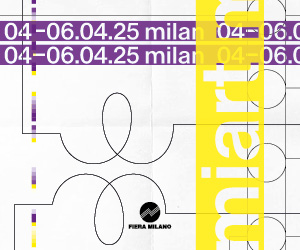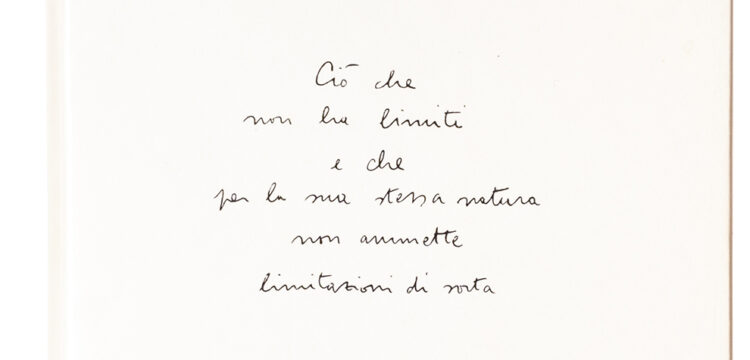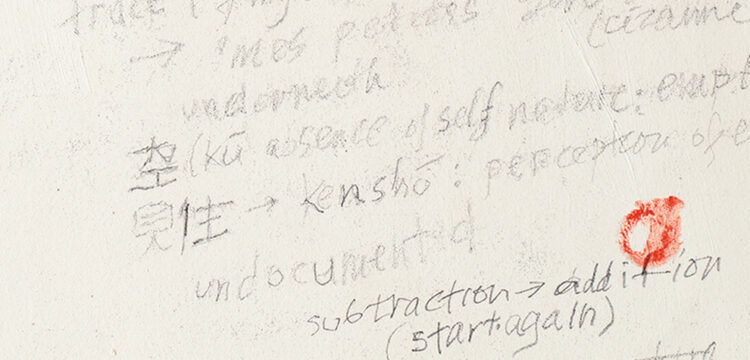Loyalty to a Legacy
Archive Actualized #5: A conversation with Francesco Urbano Ragazzi on Chiara Fumai
For the 5th issue of Archive Actualized, Replica decided to interview the curatorial duo Francesco Urbano Ragazzi, editors of the freshly released monographic book on Chiara Fumai’s oeuvre Poems I Will Never Release: Chiara Fumai 2007-2017, and together with Milovan Farronato curators of the homonymous exhibition presented by the Centre d’Art Contemporain Genève and the Centro per l’arte contemporanea Luigi Pecci, Prato, curated in collaboration with Andrea Bellini in Geneva and Cristiana Perrella in Prato. The exhibition is set to travel, in different forms, to La Casa Encendida, Madrid, and La Loge, Brussels.
Replica: You have recently been involved in the work of cataloguing and archiving the Chiara Fumai Fund in collaboration with the Castello di Rivoli. What was your approach? What role did you play?
Francesco Urbano Ragazzi: It was a delicate operation that we started immediately after Chiara’s death in August 2017, and that in a way coincided for us with the elaboration of mourning. As early as September 2017, Carolyn Christov-Bakargiev—director of the Castello Rivoli to whom we owe Chiara’s participation in dOCUMENTA(13)—expressed the desire to include the Fumai archive among those kept at the CRRI, the museum’s research centre. At that time the situation was very confusing, not to say tragic. What we can now call the Chiara Fumai fund consisted of a series of materials scattered between Bari, Brussels, Milan and Brescia, the city where Chiara had lived in recent years. It was precisely in Brescia that, together with the artist’s mother, we discovered a storage unit where the objects that would later prove to be fundamental were kept, objects of all kinds and types collected more or less in bulk in about fifty boxes: chandeliers, jewellery, stools, books, cupboards, glasses, wigs, sheets, mirrors, records, collages, documents, LPs, CDs, DVDs, ropes, blankets, shoes, clothes and more books. In the absolute chaos, each box had its own coherence, it was like a microcosm of the Fumai cosmos. It was there, for example, that we found a Prada bag with six pistols and four balaclavas inside, which, much later, in 2019, we exhibited as an objet trouvé at the ISCP, in what was Chiara’s first solo show in New York. The guns and balaclavas were props from a performance entitled SCUM Elite that we were familiar with and had participated in. The combination with the bag, on the other hand, was a new occurrence. In the midst of all this commotion, it jumped out at us as a sign of Chiara Fumai’s combinative genius, in continuity with her other works.

As you may have guessed, our approach at that stage was anything but detached. Between 2017 and 2018, however, we began to put things in order and all the material recovered was collected in Bari at Chiara’s mother’s house. It was only at that point that we managed to establish an archiving criterion, excluding what pertained to the purely personal sphere and dividing the remaining materials into 7 main categories: stage clothes, props, literary and non-fiction library, esoteric library, records and vinyls, press review, digital archive. With the museum team we then worked to formalise a donation and establish the criteria and cataloguing codes on the basis of which the archive can now be consulted at Rivoli.
Although we excluded strictly personal objects, the selection reveals how artistic research intersects with an existential dimension. The archive thus describes the cultural milieu in which Chiara Fumai’s life and work can be located.
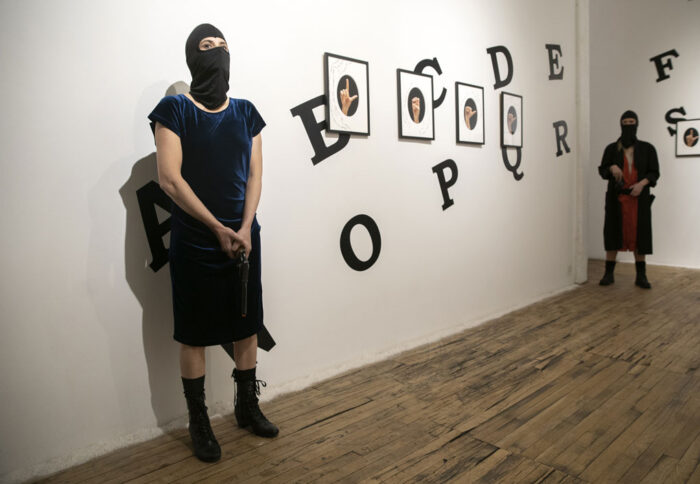
This is the first time we are interviewing curators rather than founders or owners of archives. Therefore, we were interested in learning more about your previous collaborations with Chiara Fumai as Chiara’s husband but also as directors of The Church of Chiara Fumai. We would also understand how these previous relationships have influenced your work at the Castello di Rivoli.
It is true, from a certain point on we became Chiara Fumai’s husband, even though she was not our jersey. In 2013, Chiara asked us to give a tour of one of her solo exhibitions, asking us both to introduce ourselves as her husband. Chiara’s intention was to measure people’s credulity. And indeed many people believed that we were really both married to her, even though bigamy is forbidden by law in Italy. This small interference in the ritual of the opening was part of Chiara’s way of thinking about the performance: a moment of flickering reality that has to do with the genre of the fantastic and its history.
In previous years, we had established a close relationship of intellectual affinity with Chiara, which allowed us to develop projects with extreme harmony and to work on a common front. The front was the revolt Chiara put into action through her works, imposing in the space of art the recognition of female figures removed from official history.
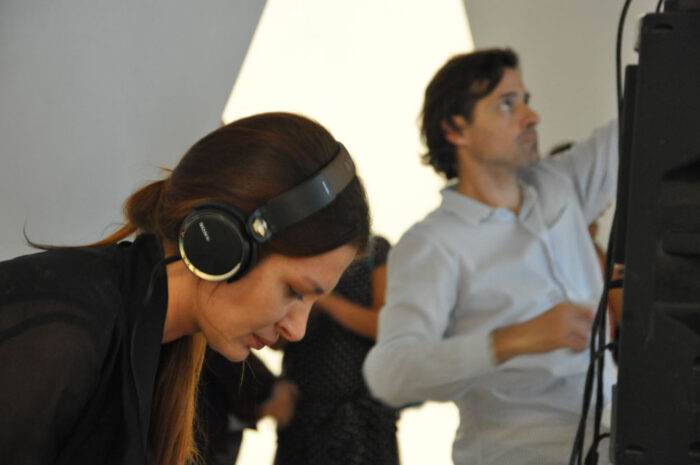
The association between us began in 2011 when Chiara took part in a project we were curating at the Fondazione Bevilacqua La Masa in Venice. The project was called Io Tu Lui Lei and it was the first institutional exhibition in Italy on the concept of queer genealogy and the artistic legacy of LGBTQ+ movements. Chiara was very interested in the idea of her work being read in the context of this kind of discourse, perhaps more than within the feminist tradition. So we started an intense dialogue that turned into an almost daily relationship. Chiara had chosen us as her husbands and we could only reciprocate.
In the following years we curated two of her solo exhibitions and wrote about her, with her and for her, sharing a certain literary appropriationism. Once we invited her as a DJ for the closing event of the Internet Pavilion in Venice. It was in 2013. The encounter between her, Miltos Manetas and mother Maria Vittoria Longhitano—the first as a DJ, the second as a VJ and the last as a presbyter called to celebrate a mass on connectivity for us—remains one of the most memorable and visionary in our history. Chiara was in fact profoundly linked to the culture of the internet, but also to liturgies understood in their performative nature. Her encounter with one of the great internet theorists and with Italy’s first female presbyter created a real clash. After all, we were all wondering how to make the work of art exist as a mediumistic and media object.
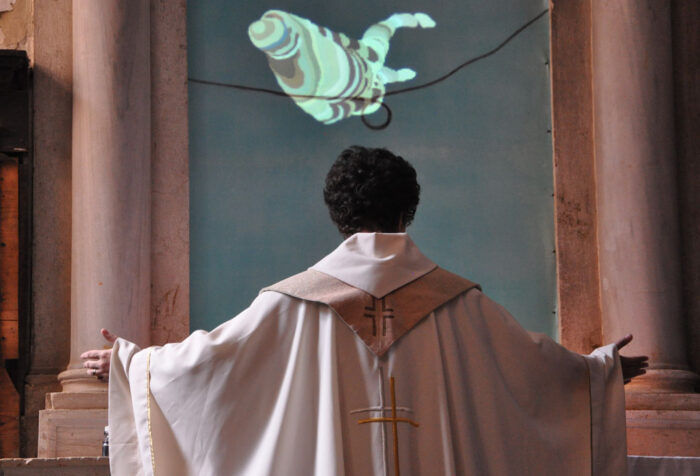
And perhaps it also tells us how, even when Chiara left us, we became officiants of her church, The Church of Chiara Fumai. The ecclesiastical institution had been evoked several times by Chiara, since her days as a DJ. Her first record was called The Church of Pippi Langstrumpf. And her Vimeo channel was called Church of Chiara Fumai. So we thought that should be the name and vocation of the body that would represent Chiara in her absence. The other members came very naturally. First of all there is Chiara’s mother, Liliana Chiari, who in some ways has always been the artist’s true muse, and together with her, indispensable, Milovan Farronato, Rossella Biscotti and Michele Spinelli. We then set up a scientific committee led by Carolyn Christov Bakargiev, another spiritual guide of the church, together with Marco Pasi and Mark Kremer.
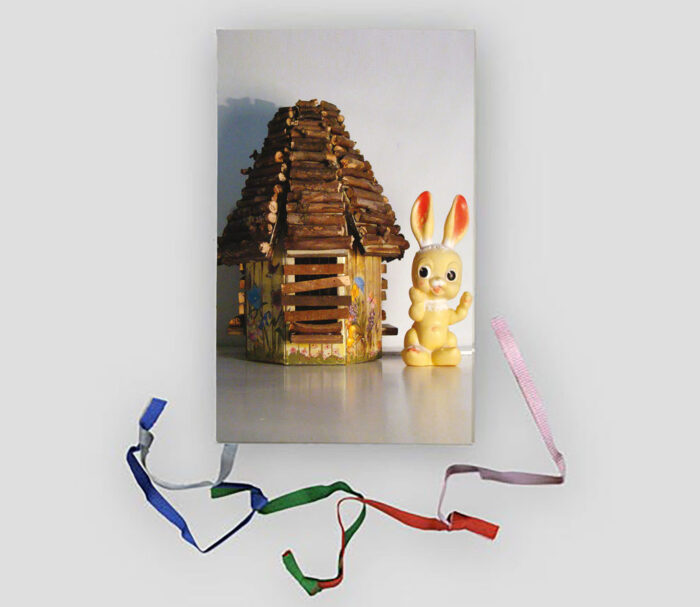
Would you like to tell us something more about Chiara’s collections dedicated to occultism, anarchic thought, feminism, but also about her record collection?
Chiara’s work is largely based on the appropriation and remix of texts written by other authors: in this sense, it should be thought of as the continuation of her DJ career by other means. We would therefore say that the library is absolutely the heart of the archive. Consulting the volumes donated to Rivoli makes it possible to reconstruct in a fairly precise way all the sources used to create works and performances. On the one hand, through the archive it is possible to trace the origin of the quotations that Chiara has concealed in all her work. For example, we were able to precisely trace the source of the message communicated in sign language in the performance I Did Not Say or Mean “Warning”, which in fact came from a letter from an anonymous Red Brigades militant transcribed in the book Mara e le altre: le donne e la lotta armata by Ida Faré and Franca Spirito. In addition to this, the archive tells us how Chiara studied her characters, or allows us to understand the unity of her research. A single vector ties together, for example, the servant-master dialectic in the theories of Hegel and Marx, Angela Carter’s The Sadeian Woman and Kathy O’Dell’s Contract with the Skin: Masochism, Performance Art, and the 1970s.
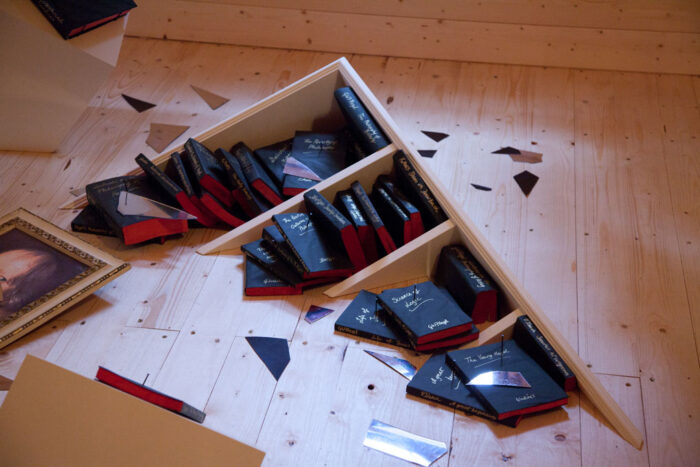
The same can be said of the record collection, which reveals Chiara’s interest in Italo Disco–an interest that has come together in the performance Chiara Fumai Presents Nico Fumai. But there is more. This part of the collection is divided into two main sections: the vinyl or CDs we found in Chiara’s travel bag and those found elsewhere. This distinction gives a picture of the music that Chiara played on her last DJ nights, from Nina Hagen to Telex to Trans-x, from Drexciya to Lory D, but also offers a glimpse into her musical culture.
The esoteric library, on the other hand, contains theosophists such as Blavatsky, Besant and Fortune, to whom Chiara also dedicated works and collages, occultists such as Crowley, LaVey and Carroll, and magical orders such as Golden Dawn and Dragon Rouge. Marco Pasi is right when he notes that, as time goes by, the imagery linked to occultism acquires more and more weight in Chiara’s work. However, it remains to be seen to what extent artistic and spiritual practice go hand in hand or are separated. While Chiara was certainly interested in occultism, her work seems to have more to do with operations of continuous concealment.
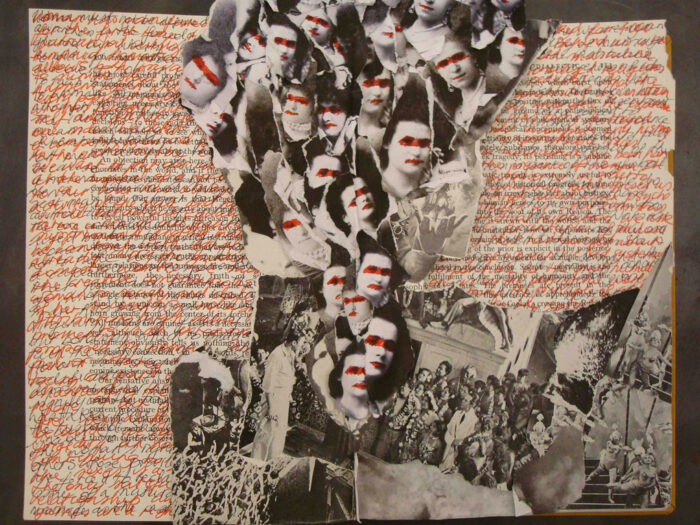
Has Chiara ever made or collected artist’s books?
Fumai’s first artist’s book dates back to 2009—The Girl with the Blanket, published by Atomic Activity Books—and elaborates on a video installation with the same title that tells of the artist’s escape from the Dutch prison of Oostereiland. The publication consists of a sound book, just like those of certain disturbing children’s fairy tales, whose batteries slowly run out, making the sounds increasingly gloomy and croaking. The images of the escape, captured in a series of stills by the prison’s surveillance cameras, were accompanied by a voice recording on a sound chip. The voice heard on opening the book was obviously that of Chiara shouting “Open the door, open the door, let me out of here. Hänsel, you bloody scumbag, open the door motherfucker”: a sequel to Hänsel and Gretel told from the witch’s point of view…
A series of books, a veritable library, later appeared in the Moral Exhibition House, the project presented at Documenta in 2012. Chiara brought the idea of the freak show back into the limelight, and in one of the prefabricated houses set up in the city park she had two Barnum circus freaks perform, again through her voice and body: Zalumma Agra and Annie Jones. The house had a library designed as if it had sunk into the floor. Its shelves were arranged in the compositional pattern of a Kandinsky canvas. The books in this case were not searchable, but lay side by side with their black covers and handwritten titles. Judging by the covers, they were great classics of modern philosophy, from Hegel to Proudhon to Marx and Engels. Their order had been supplanted by that of the freak show and the ghosts that haunted the house, in whose rooms the words of Carla Lonzi and Rivolta Femminile resounded.
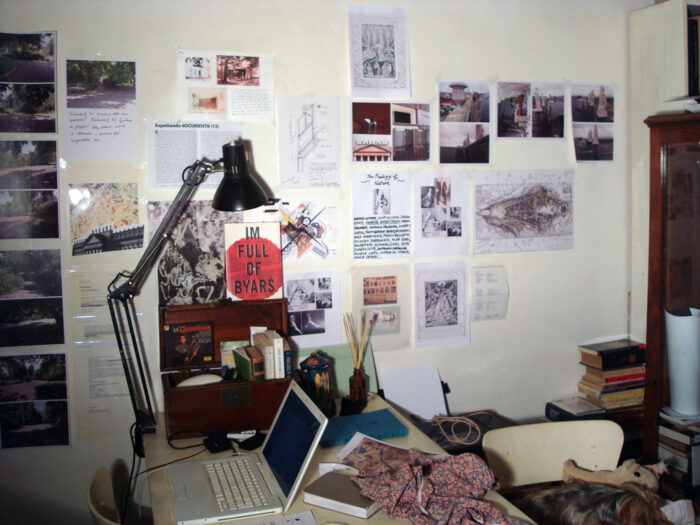
Here, as in many other cases, Fumai’s work overturns the paradigms of a rationalist and masculinist culture, bringing to the surface its contradictions and repressed feelings. Books are then objects of knowledge, but critical, not dogmatic knowledge. The texts thus become sources for sampling, remixing and even vandalism. It is on this principle that Chiara Fumai’s entire work is based: an action of historical revisionism based on textual appropriation and re-signification. Artist’s books are almost completely absent as a closed form, but there is rather a trans-historical network of literary references ranging from Pauline Reage’s Histoire d’O to The Coming Insurrection by The Invisible Committee, from La Donna Delinquente: la Prostituta e la Donna Normale by Cesare Lombroso to Kenneth Anger’s Hollywood Babylon, from Julius Evola’s Phenomelogy of Subversion to Carla Lonzi’s Spit on Hegel, from the Bible to Nag Hammadi’s Gnostic Codes, from Valerie Solanas’ SCUM Manifesto to Christine de Pizan’s The City of Dames. These and many other titles become the subject of visual collages, but also of sound and performance, in an often literary quotationism that transcends the meanings of the individual texts that are plundered.
We could say that, in this sense, Chiara’s entire work is a great artist’s book, a transmedia anthology.
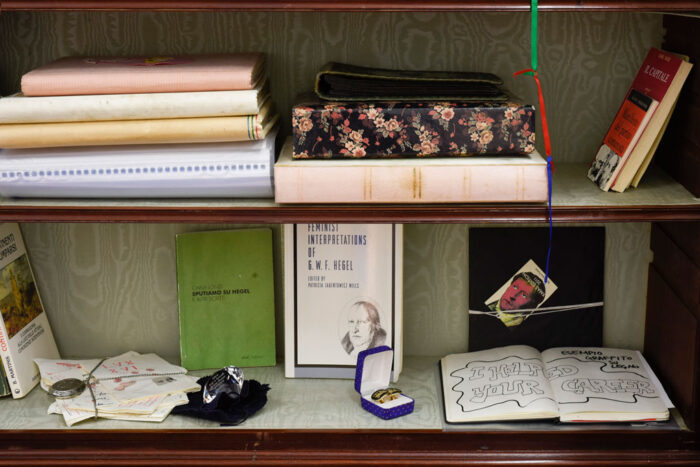
You recently curated an exhibition project dedicated to Chiara at the Centre d’Art Contemporain in Geneva. How did your archive work influence the realisation of the exhibition?
This anthological idea we were talking about guided us in the conception of the exhibition from the very beginning. One of the starting points was actually the Bayeux Tapestry: a long embroidered fabric representing in images the events that led to the Norman conquest of England. Obviously it was not so much the subject of the work that interested us as the relationship between writing, narration and embroidery. Chiara’s wall drawings and collages are a very evident thread throughout the visit; they are also a fundamental presence to discourage any easy identification between Chiara’s work and performance practice alone.
There is also a posthumous element that profoundly reflects the archival work and the approach adopted in recent years both by us and by Milovan, co-curator of the retrospective. The element in question coincides with the first room of the exhibition, in which a room in the two-room apartment in Via Col di Lana 8 in Milan where Chiara lived the crucial years of her life and career has been reconstructed. The reconstruction of the room includes an important part of the archive donated to Rivoli, some early works, together with diaries and sketches that at different times dotted Chiara’s domestic and artistic universe.
As early as 2013 Chiara had expressed the desire to create a humorous self-celebration in the form of a House Museum compressed into a few square metres. Her wish had never been fulfilled and Geneva seemed like a good opportunity to make it happen. Starting from the plan of the house, the photos in the archive and the inventory of materials in our possession, the environment was then reconstructed and adapted in dialogue with the teams of the Centre d’Art and the Centro Pecci directed by Andrea Bellini and Cristiana Perrella. The result is a hybrid between an archive and a work that expresses the transitory dimension, and infinite potential recombination, typical of Chiara’s work. There is also all the ambiguity between the real and the fake, scientific rigour and surrealism, solemnity and irony.
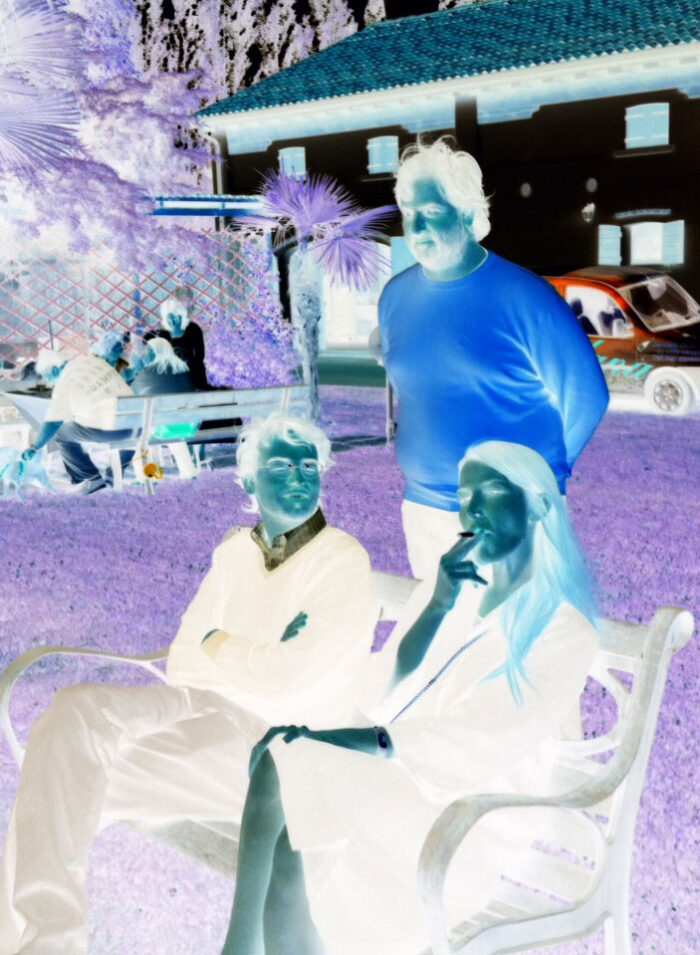
We seek to give shape to new possible readings of the archive object. First of all, what we try to do is to imagine it as a research institute in which the contribution of different figures within it and in the development of research is as important as the materials it contains. What are your thoughts on this?
As Chiara teaches us, archives are open spaces of imagination within which to establish new associations. Certainly, however, working on Chiara’s archive, as on that of any other artist, imposes loyalty. A loyalty to the artist’s own values, which are the only possible guide. There is a form of rigour that is scientific, but also a moral one, which concerns respect for the artist’s work and his life even after his death.
After Chiara’s death, a close friend advised us to give up the mission of saving her work. It seemed to him to be too complicated and painful a situation from which she herself had somehow escaped. Indeed it was and still is a painful and complicated situation, but it is also our story. The archives are also the fruit of these choices. They are living memories, memories that love and fight, that revolt and sometimes disappear.
The world is a huge archive made of archives. Our phone is an archive, our bookcase, our wardrobe, our bed, your eyes are. We can sink into each of them or decide to stay on the surface until we find the archive that answers us. Sinking is an act of love.


